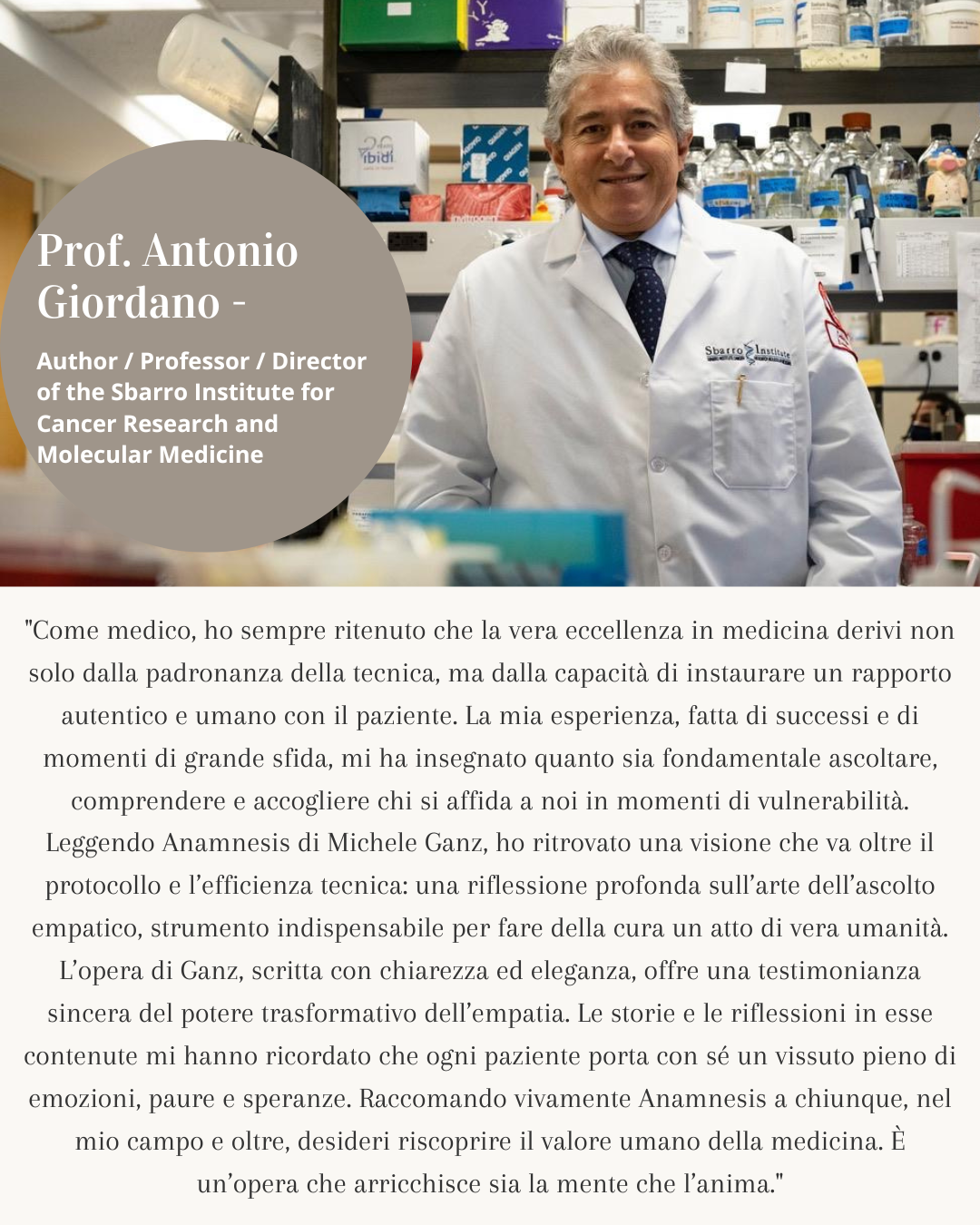Psychotherapist and Professor at Humanitas University
Department of Psychology and Internal Medicine
Humanitas University
Rozzano, Italy
"The Fundamental Role of the Doctor-Patient Relationship"
I vividly remember the exact moment when I understood how crucial the doctor-patient relationship was, realizing it was central to care rather than just a secondary aspect of medical therapy in the strictest sense of the word. In 1998, I was a young graduate of just 24 years, a first-year resident in Clinical Nephrology. I was rotating in the Transplant Ward of the Department of Clinical Medicine and Nephrology at Ospedale Maggiore in Parma. A kidney transplant had just been performed on an 18-year-old girl with spina bifida. The operation went smoothly, and I was the on-duty doctor by her bedside, ensuring everything was fine and waiting for her to wake up from the anesthesia. When she opened her eyes, I was there in my white coat, with a look of anticipation (I’ve always thought the best part of my specialty was the Transplant Ward because there’s an atmosphere of anticipation and hope, much like in an obstetrics ward...). The postoperative course went well. On the day of her discharge, before saying goodbye, the girl took my hand and said she would never forget my face. I was the first thing she saw upon waking up, and still in the fog of anesthesia, I appeared to her as an ‘angel,’ her ‘angel’ who had given her a second chance at life. I demurred, trying to point out that I had not done anything special. My knowledge and clinical experience were so limited that I could not have contributed significantly to her recovery. I was simply there, present, sharing the same space. Nothing more. Over the years, I realized that what I had done was, in fact, significant. My contribution to care was in being there and putting the patient at the center. I had created a therapeutic alliance, a relationship that in itself is already a form of care.
Another moment that changed the course of my career came later. I was in my third year of residency, and I had to deliver some ‘bad news’ about a patient who had been diagnosed with chronic renal failure, requiring dialysis treatment soon. I was 26 years old, facing the patient’s wife, a lady in her sixties, and their forty-year-old son. They might have been younger, but they seemed so ‘grown-up’ to me that I felt smaller and inadequate. A piece of news that sounded like a sentence. Something bigger than me, and I carried the weight of that communication alone. After informing them about the need for dialysis, the wife started crying, while the son tried to support her. I didn’t know what to do or how to behave. The firm belief of my generation and even those before (unfortunately, also those who came after...), was that to be a good doctor and convey professionalism, one needed to be detached and not show their emotions. Especially not being in touch with one’s own emotions as a doctor. However, this had the opposite effect on me. The more I tried to appear detached and professional, the more I felt my legs and voice tremble. Emotions were taking over. Despite having answers to the wife’s and son’s numerous questions about the clinical situation, I felt I had no means to handle their emotional side. I wasn’t doing my job well. At that moment, I felt like a bad doctor. That episode changed my career path. After my residency, I sought refuge in a research project at a major Nephrology and Transplant Center in London, which eventually resulted in a PhD in Immunology. This way, I distanced myself from clinical practice and the significant problem of doctor-patient relationships and proper communication.
After a long personal and professional journey, I left nephrology and clinical practice behind, and today I work as a psychotherapist, primarily with patients in private practice but also in academia. I have specialized in empathetic communication and, combining my medical and psychological skills, I teach students of Medicine and Surgery and those in the MedTec program at Humanitas University the communication techniques for handling difficult conversations in medicine. With the students, we also work on their emotions, encouraging them to develop greater awareness of their own experiences when they interact with patients and their suffering. An empathetic doctor does not have to be a psychologist. An empathetic doctor is someone who is completely in touch with their emotional world and, by virtue of this, can actively and presently listen to the other person, put themselves in their shoes, and legitimize their emotions. Effective and patient-centered communication makes us better doctors because it facilitates an excellent therapeutic alliance, crucial for the patient’s prognosis and care. I firmly believe that communication in medicine should no longer be seen as a simple ‘soft’ skill in clinical practice but as a technical skill on par with any other skill necessary for patient care.
The renowned Canadian psychologist Ronald Melzack, known for formulating the ‘gate-control theory’ of pain with Dr. Patrick Wall, asserts that compassionate pain management requires analyzing its social dimensions, going beyond the purely physical implications. According to Melzack, external context can influence pain more than internal dynamics. This perspective is emphasized by Atul Gawande, writer and surgeon, in his book ‘Complications,’ where it is highlighted that pain from non-physical causes is just as real, as the brain perceives it similarly to physical pain.
In 1977, George Engel published for the first time in Science (Engel GL. The need for a new medical model: a challenge for biomedicine. Science. 1977;196(4286):129-36) an article highlighting the need for a new model that puts the person in their entirety, including the social context in which they are found, at the center, and not just the disease. This means that the patient’s experience of the illness, in its entirety, depends not only on the organic damage itself but also on the psychological condition and the social context in which the patient lives. The Bio-psycho-social model is now the gold standard of modern medicine. When dealing with chronic pain, for example, this model should be the reference for its therapeutic approach.
The role of the doctor goes beyond ensuring simple health and survival; it extends to a broader scope, which is promoting well-being. Promoting well-being involves considering the deeper motivations that drive a person to want to live fully. This remains the cornerstone of the new way of practicing medicine. Putting the patient and their well-being at the center, not the disease and its cure. This principle is the basis of all medicine founded on Shared Decision Making. In ‘disease-centered’ medicine, the therapeutic approach focuses on the disease and its treatment, neglecting the patient and their values, desires, and priorities. If we instead adopt a holistic, ‘patient-centered’ approach, we listen to the real needs of the patient and the values on which they base their reasons for living. Quality of life takes an indispensable role, putting mere prolongation (survival in the presence of disease) in the background.”




